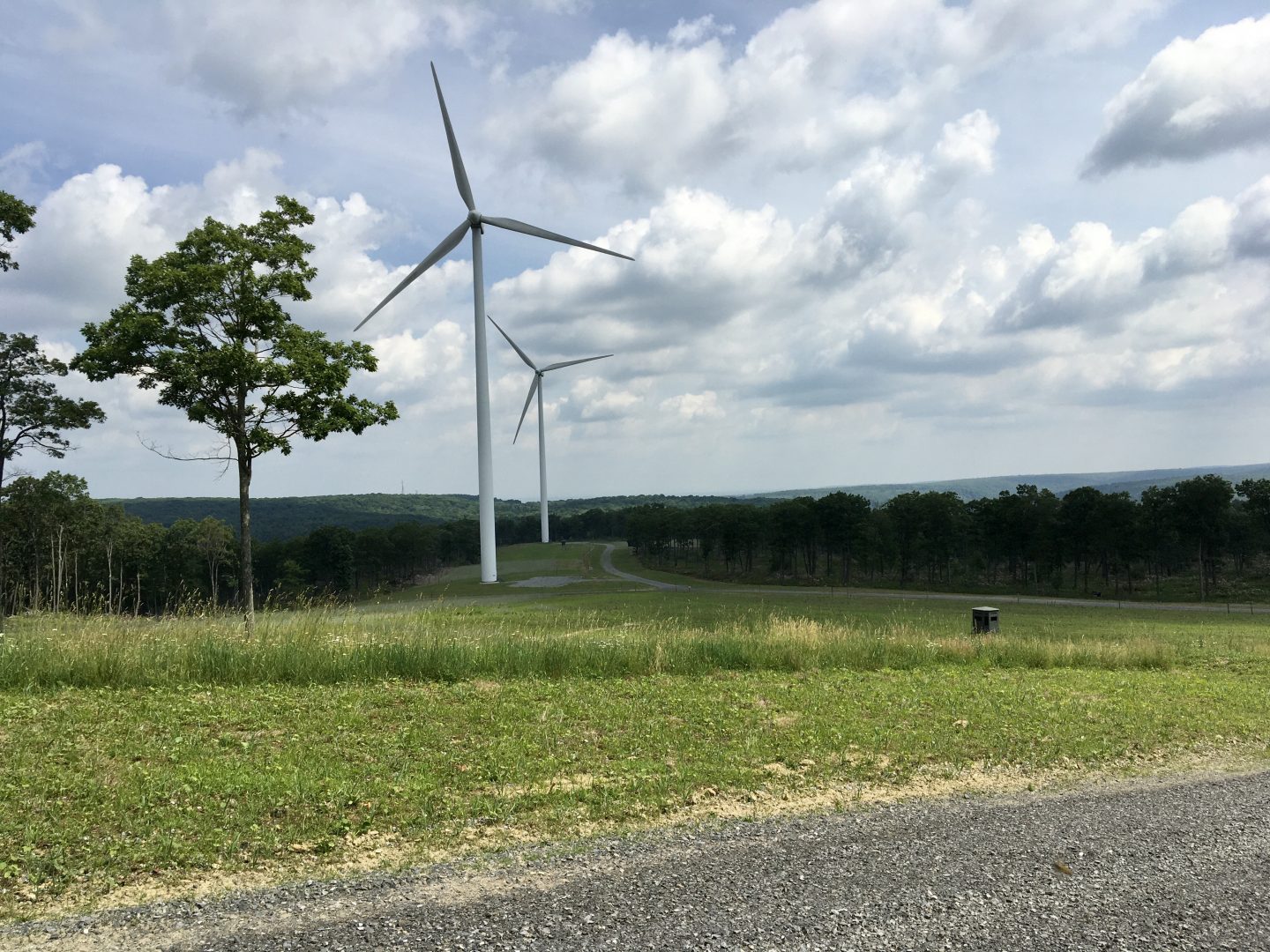
Turbines that are part of the Sandy Ridge Wind Farm in Centre and Blair counties. Wind energy is one option for electricity consumers in Pennsylvania.
Anne Danahy/StateImpact Pennsylvania

Turbines that are part of the Sandy Ridge Wind Farm in Centre and Blair counties. Wind energy is one option for electricity consumers in Pennsylvania.
Anne Danahy/StateImpact Pennsylvania

Anne Danahy/StateImpact Pennsylvania
Turbines that are part of the Sandy Ridge Wind Farm in Centre and Blair counties. Wind energy is one option for electricity consumers in Pennsylvania.
The headline in this story was updated to reflect Pennsylvania received $3.6 million for renewable energy.
Farmers and small businesses in rural areas got $3.6 million for renewable energy development on Nov. 1. The investment is expected to save Pennsylvania’s businesses half a million dollars each year.
As part of REAP, the Rural Energy for America Program, awardees can get up to 75 percent of their renewable energy project funded by the U.S. Department of Agriculture (USDA) Rural Development Program. That money comes from the Biden-Harris Administration’s Inflation Reduction Act, which previously covered 25 percent of project costs.
Pennsylvania’s USDA Rural Development Director Bob Morgan said the grant helps farmers avoid taking on a second job.
“They work hard doing the farm in the morning, [working] hard doing farming when they come home from work at night. But in order to provide for the family, the extra money, they have to have a job off the farm. We’re hoping that this allows some farmers or businesses to be able to diversify their income stream,” said Morgan.
Besides saving farmers and businesses thousands of dollars each year, Morgan said the program reduces their environmental impact. He said Wen-Crest Farms in Lebanon, Pennsylvania is installing a new solar panel system through their REAP grant.
“The installer will place panels on the chicken house and that will allow them to generate an amount of electricity equal to half [of] the farm’s consumption,” Morgan said.
One of the other awardees, Tulpehocken Spring Water in Northumberland, PA expects to save enough energy to power 69 homes each year through their solar panel grant.
Karama Neal, administrator for USDA’s Rural Business-Cooperative Service, said REAP modernizes farms and businesses.
“Not only is it making a significant climate impact. This is affecting people’s bottom lines…this is affecting their ability to cash flow their business, cash flow their farms, have multiple streams of income, be able to reduce expenses and really help to make sure their business is sustainable,” said Neal.
REAP is part of USDA’s Justice40 Initiative, which saves 40 percent of investments for marginalized or underserved communities. Neal said REAP offers applicants counselors through their REAP Technical Assistance Grant Program.
“[They] make sure people have access to the program, right? So, part of what we see is that, y’know it’s a great program…but it does take a little time,” said Neal. “You gotta fill out the application, you gotta know about it, do a little bit of homework to make sure it happens. And obviously, we want to minimize that as much as possible and make these programs as easy to access as possible. But it does take a bit of effort. But what we find sometimes is that some communities may not know about the program.”
Besides making sure applicants have all required documents, REAP’s counselors help people apply for additional benefits they may not have known about.
Neal said USDA also changed the grant process from annually to quarterly so more communities can apply for REAP.
“It makes room for folks to take a little time if they’re new to this process. Some folks are ready and they’re on the go, ready to go, and we welcome that. And again, that’s why we’ve been able to make so many awards initially. We also want to give space for folks to make use of the technical assistance providers, so that they then can…submit a competitive application. And maybe get some awards in places that maybe haven’t seen awards before,” said Neal.
USDA is currently accepting applications for REAP funding. To apply, go to USDA Rural Development’s REAP page. Projects in marginalized or underserved areas get priority for funding. Check if your project qualifies at USDA Rural Development’s Priority Points page. All applicants for REAP’s most recent award cycle were approved and received 75 percent of funding for their proposed project. For a list of this cycle’s awardees from Pennsylvania, check out USDA’s awardees fact sheet.

A collection of interviews, photos, and music videos, featuring local musicians who have stopped by the WITF performance studio to share a little discussion and sound. Produced by WITF’s Joe Ulrich.
The days of journalism’s one-way street of simply producing stories for the public have long been over. Now, it’s time to find better ways to interact with you and ensure we meet your high standards of what a credible media organization should be.